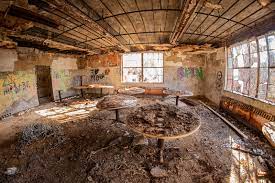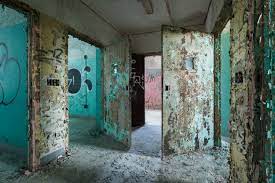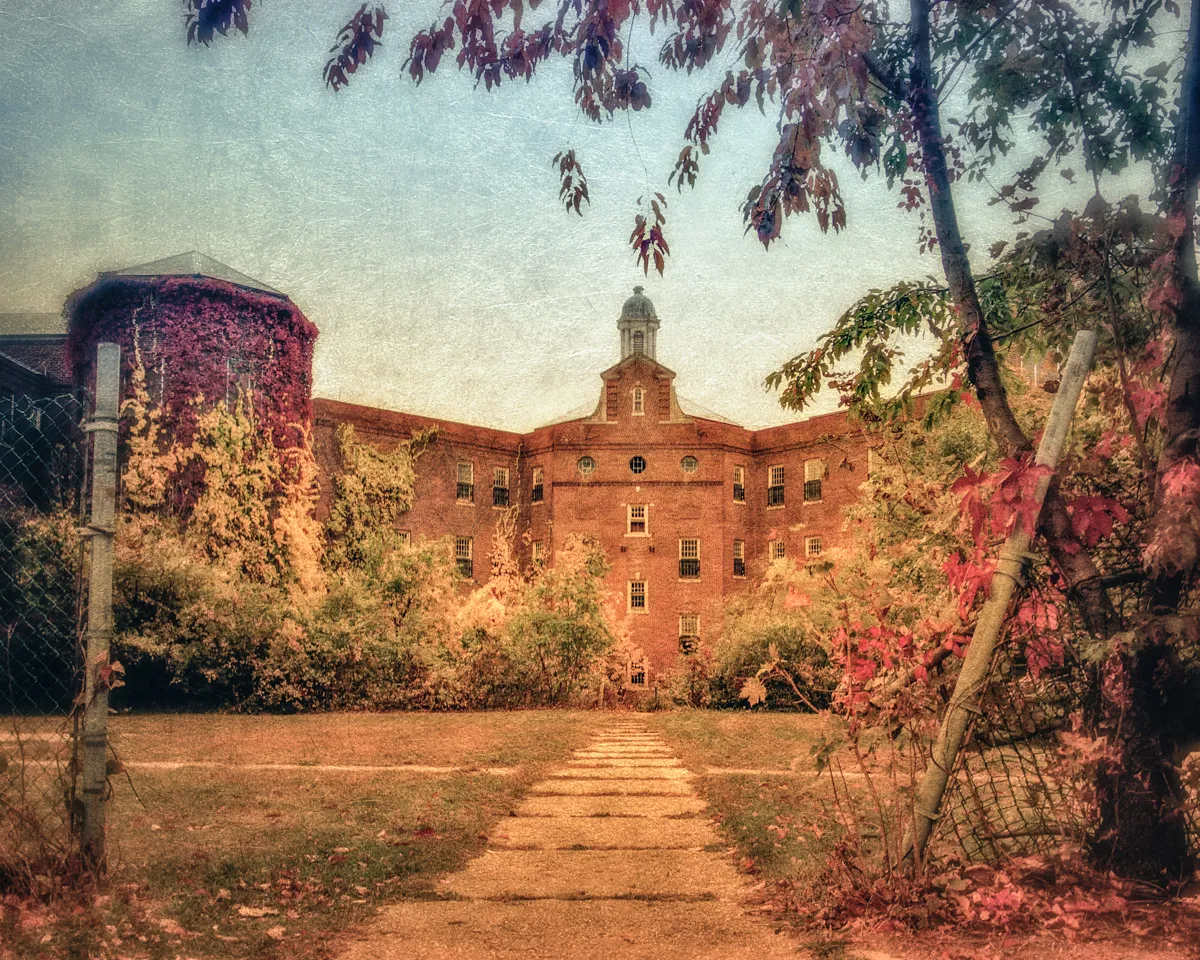
History of a Castle for the Mind...Part-2 Part-1
The hospital started out as a farm colony at the height of the warehousing era
However, all good things,...
The hospital started out as a farm colony, where patients tended the fields and grew their own food. This was the primary mode of therapy at the time, before any medications were available. Kings Park was established to reduce the burden on hospitals in Brooklyn that were overcrowded. The farm colony was considered the antidote to the dense and dirty city, where patients would get fresh air and open space. Between Kings Park and Pilgrim state, these facilities were erected during the time of the housing era of psychiatry. It took a hard turn when we entered the treatment section of the psychiatric history. This involved using methods of insulin seizure's, sweat therapy where common, and a ground breaking new treatment that was developed which was first performed in 1935 by Egas Moniz and then championed in the U.S. by Walter Jackson Freeman.
Moniz thought that a physical malfunction in the brain caused symptomology of most 'sickness of the mind.' He believed he could cure them by severing the connection between the frontal lobe and other regions, forcing a kind of reset.
A lobotomy involves severing the nerve connections between the frontal lobe and other regions of the brain to reduce agitation, anxiety, and other symptoms of mental health conditions. Moniz traveled the country teaching this new "treatment" to hundreds of psychiatrists and surgeons around the U.S. who interned began teaching the procedure in theaters promoting the treatment as a quality of life treatment, helping their patients disconnect with their emotions that overwhelm them. The idea behind it was to elevate the pain of being depressed, anxious, fear, anger, helplessness and hopelessness...this however, this also eliminated any feelings of joy, hippieness, fulfillment, or a sense of belonging. It also had the added side effect of taking away compassion and empathy for others. This procedure left the patient as nothing but a empty shell without any feelings at all.
As Moniz and Freeman were in the heights of their stardom, the promotional aspect of this treatment was summed up as “These patients can be treated a good deal like children, with affectionate references to their irresponsible conduct. They harbor no grudges,” explained Freeman and Watts in a 1942 presentation Trusted Source at the New York Academy of Medicine.

This picture was taken at the height of the warehousing era of psychiatry. The asylum days were meant to keep the undesirable off of the streets of the greatest city ideas during the industrial age. They had a problem. The streets were built in a way where the entire population of New York State grew upwards on an island smaller in size that road island. When there are over 8,000 people who called the 2.287 square miles home, not to mention 1.889 million who commuted on a daily basis to the same 2.287 square milage of land to work, growing up when there was no room to grow out, there needed to be a solution to the problem no one wanted to voice. Homeless and mental ill. Stemming from King's County, and built as a different approach to the traditional asylums that were overcrowded and inhumane, the idea of a farming stile of treatment with open air and freedom to roam. The breakaway of housing to a working farm where the patients all had a job and would work together for success of this new "colonies." That's when the tracks began to fit as many people, mothers, fathers, sons, daughters, into cattle cars to drive them out east to a "farm where they could run and play in the open air," while sweeping the streets clean for the visitors and tourist populations all in the 1940s. Within the two decades those numbers all tripled in size with the 4,755 residents and the 4.424 million commuters building not just up at this point but defying engineering marvels at the time and creating a tulle system under rivers, an aqueduct that stretched almost 3/4ths of New York state itself, and high rises that were larger than anything built by man. The trains all kept leaving the stations. While in kings park, the patients began to thrive and forge their own city that was run and cared for by the population of 4,160 in 1910. This was a general peaceful time with over 150 large buildings on site, running water through turbines, operating farming equipment, learning skills such as masonry and carpentering. The uniqueness of this farm land was the residents, doctors, nurses, orderlies, drivers, and everyone else who enjoyed the rural suburbs a million thoughts away from the hustle and bustle of New York, they thrived and kept to themselves.
However, all good things,....What little resources remain. and based on several articles, the warehousing effect had taken rout full force and a place where open spaces and work related treatments once offered the overburdened mind peace became what was described in the 'Library of Rutgera.edu when attempting to explain a community within a community "This sense of fraternity too would extend itself beyond the hospital grounds to members of the lay public itself who, as noted by Varady, “grew up” with both the hospital and its residents. This suggest an understanding between members of the public and the administration of the mentally ill facility as it relates to the structural and spatial arrangement of both the community and the hospital. Residents of the town of Kings Park have affirmed their relatives or peers’ experience of sharing a meal or holiday celebration together, entertainments at the hospital’s amusement hall, or interacting with one another at a community function. Local memory and oral histories, then, paint a benevolent image of the bonds connecting the hospital in Kings Park, its patients and the community. As outlined in official histories, members of the community were equally as essential to the treatment and care of the patients as were the therapeutic functions the institution. While an outside perspective may view the actions of Varady and others as peculiar, these local dynamics attest to the social bonds that connected the lay public with the mentally ill. Local memory has established that the proximity of the hospital to the community has allowed for this correlation to develop. We may therefore conclude that those who were not privy to these local interactions lacked the understanding residents of Kings Park and the surrounding vicinity possessed. Moreover, this unfamiliarity may be supplemented by more popular conceptions, and misconceptions, of mental health care, the experience of the mentally ill in an institutional based setting, and the response of the lay public. Here, the mentally ill are by and large relegated to the status of an “other” within the general population, resulting in their ostracization from the community and confinement in a mental hospital. Institutions are then portrayed as repressive environments intent on correcting and managing behaviors that deviate from that of the social norm and separating burdensome persons from their relative and peers. These conceptions have been informed by patient narratives and exposes, which offer the lay public a glimpse into the lived realities of the mentally ill: overcrowded wards attended by ignorant ward attendants and intensive, barbaric and inhumane treatment methods. Historians and revisionists alike have engaged with the underlying powers operating within and beyond mental health care services.4 Together, these narratives paint a history of mental hospitals based on stigmatization: of the purpose and functions of an institution, and that of its resident charges. The former state hospital at Kings Park did not stand apart from the lived realities which commonly befell large-scale institutions throughout the nineteenth- and twentieth centuries. Annual reports and local news sources attest to the lack of available accommodations and repeated denial for any requests for funding in order to appropriately treat and provide for patients of the institution. In addition, cases of neglect and abuse. So called Doctors of the night would come to the campus and stay for a time experimenting from tooth and fingernail extractions to large portion of skull and brain matter removed, poked, prodded, infused and then left in single cells for months on end with no other contact. Then as mysteriously as they came they left. what was once a safe haven wit its own fire services and water utility factories became literal concrete celled walls and ceilings where the residence had to sleep head to toe on the same mattress in crudely made concrete cells, or single celled bared re-enforced doors, with one foggy window and a toilet without any stimulation or care."
















Comments